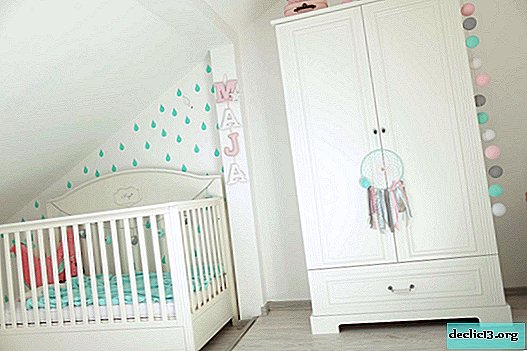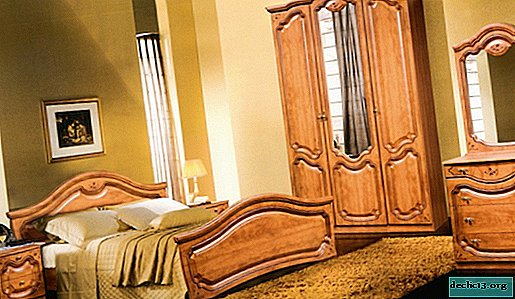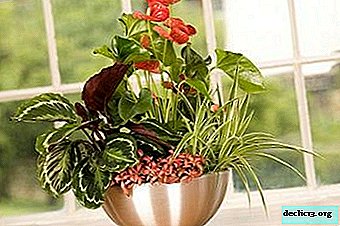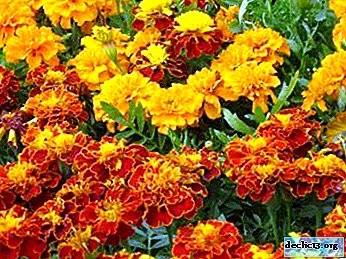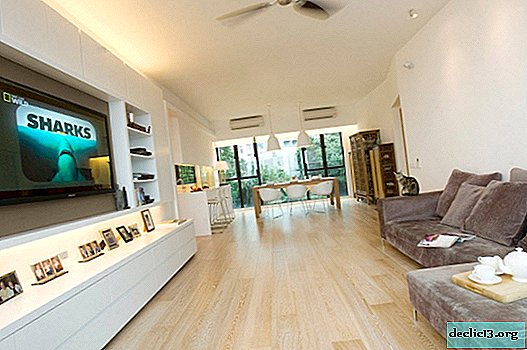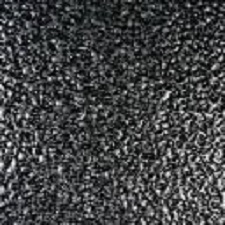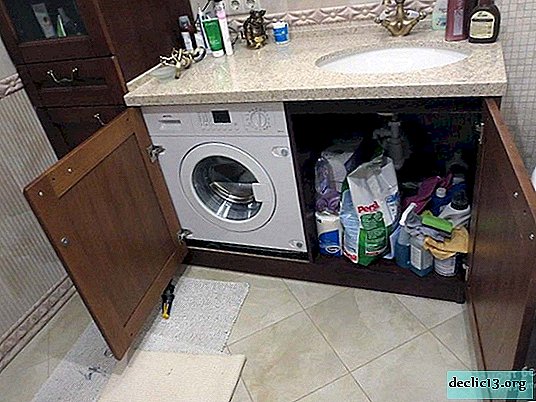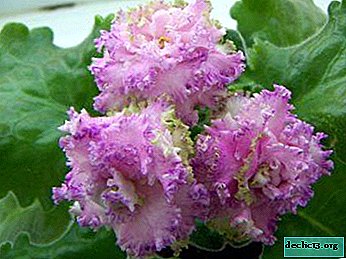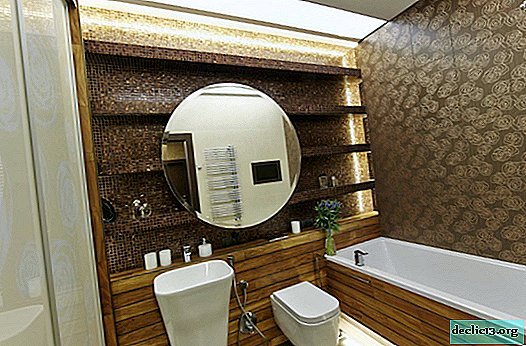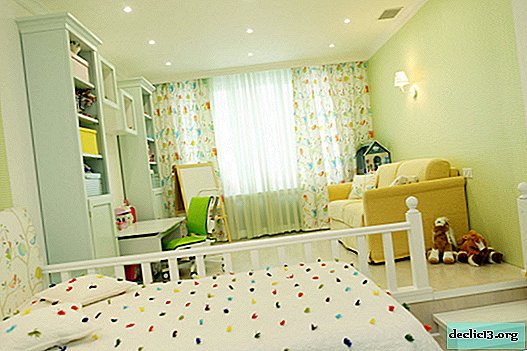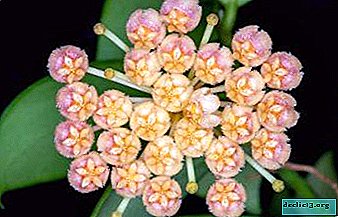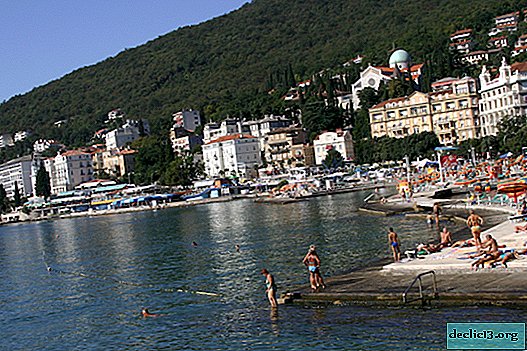Wicker beauty of climbing plants
Regardless of the area and terrain, any area can be really turned into a candy. The beauty of the “wrapper” will be provided by lawns and curbs from bushes, correctly composed compositions, and creatively designed flower beds. The "filling" will be the variety of varieties of climbing plants.
A gazebo buried in vines, a decorative web of greenery on the wall, colorful arches and passages will be the highlight of your landscape. Floral smells, colorful trellises, and the totality of the marked points are responsible for aesthetic ecstasy. To organize the garden, use pergolas and fences, a sliding mesh between the supports, which turns into a living canvas in a short time. First, you should turn to their design in order to create conditions for vertical support of plants.
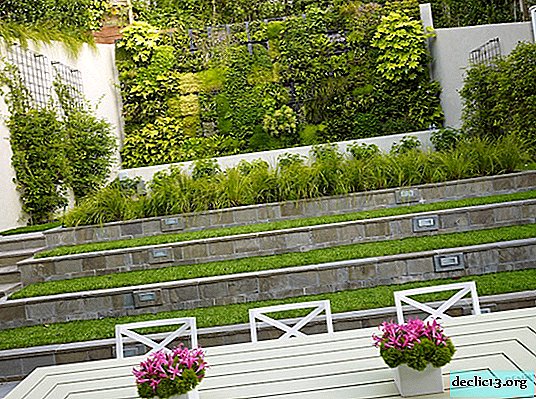

Supports for loaches
To organize woody and stunted species, it is customary to use lattices from available materials - trellis. They can be mounted directly on the wall of the house, to the terrace and in the form of an independent wall in order to decorate the designated segment.
"Mustachioed" species: girl’s grapes, hydrangeas and ivy do not need additional structures at all. With tenacious “antennas”, they braid any object with a web, and do not depend on support. It is enough to plant them near the fence, then to provide for ourselves. The only moment is fixing the shoots to the vertical with tape or plasticine upon growth.
Wooden trellises of rectangular and square configurations with a diameter of 2-3 cm, organized in the form of cells, are most in demand in practice. They are easily mounted on their own, and the process requires only slats and beams of pine and fir. The wood is processed with the appropriate composition, and the finish varnish provides long-term operation.




In order to avoid contact with the ground, the supporting frames are placed in metal glasses with welded fittings. Bamboo rods are welcome only for entangled vines. The finished design must withstand gusts of wind and the weight of an adult plant.
- interesting options are versions of metal, plastic and stone. Forged supports become an additional decoration of the design, and elegant work is especially noticeable in cold weather, when the metal lace is not covered with leaves.
- a nice pergola can be obtained from improvised material - reinforcement, profiles, thick wire, aluminum pipes, but they require painting.
- mesh netting has recently been increasingly used for such structures. It is mounted like a fence, pulling between the dug columns. An interesting solution is the plasticized model, which rests on special brackets.
- another variation is the cute plastic cells, which retain a decent appearance in any weather and a long time interval. They differ in quality of material and performance. Cheap analogues do not tolerate the sun and temperature, and as a result become fragile.
- borrow the constructive idea used for legumes. For the antennae are put the usual rods connected in the form of a tent. On sale there are ready-made mesh arches, portable trellises, collapsible plastic models.
When mounting a trellis on a wooden base, distance yourself from the wall by 30 cm, move away from a brick or metal surface to half a meter. Air flow is vital to protect the plant from overheating in the heat. Especially from the south side.




Flowering Perennial Trellis
The location of perennial loaches as well as organized planting of trees and bushes should, in theory, be taken into account in design sketches. After all, a competently structured space is responsible for the choral sound of the chosen style:
- for example, clematis, tubalflower or campsis, hydrangea and wisteria are intended for pergolas and other types of supports. The veranda, entwined with blue clematis, is delightfully beautiful;
- mountain clematis, from the end of spring until frost, decorates the frame or fence with a white and pink floral print;
- a loving shadow, a proud "feminist" hydrangea, clinging to strong roots, is responsible for its support with a strong root system. True, she needs a couple of years to form white umbrellas;
- honeysuckle will easily give the old fence a new sound. Honeysuckle variety is most optimal for our conditions. The two-color beauty directed to the sun with the "edible" aroma in the design of the gazebo or porch will become a virtual dessert for tea;




Always green ivy will tighten walls and fences. The plant does not belong to flowering species, but the lack of stamens and pistils is compensated by the density of foliage of luxurious thickets. Wild grapes will keep him company. It will entangle the first floor of the house and will light up in the fall with a red gamut. At this time, actinidia will support him with his “tricolor” - pink, green and white gamma of leaves. Kiwi (Actinidiachinesis) from the same group is ready to complement a given topic or to decorate an indoor passage on her own.
We worship the beauty of roses, like the Japanese sakura. The climbing species bloom aggressively for a long time, despite the drought and bad weather. It is necessary to feed the bushes a couple of times a season and do not forget about watering, as they veil with bright colors all that you can grasp at the shoots. They prefer to be friends with a wild vineyard. Girl's grade solo at a time when the colors begin to fade. It captivates with rainbow tones against the gloomy background of late autumn.
Campsis is a tree-like liana with red bells. There are still yellow, lilac and with a delicate shade of pink. In the gentle embrace of flowers, a fence or trellis seems flawless. Fragile beauty can not resist the cold winter, if you do not take the responsibility of dense insulation of the roots of the plant.
Note!Non-flowering vines are an excellent background for bright inflorescences. Add a campsis or clematis to the ivy wall, and your fence will cause the envy of your neighbors.



Swift beauty of one year old
Perennial creepers for years take root in the allotted area and thoroughly fix it for themselves. The magnificence of the annual loach comes down to just a seasonal tour. This fact in no way begs the beauty of the wiki (Lathyrus odoratus), nasturtium (Tropaeolum), bindweed (Ipomoea tricolor) and other representatives of this group.
The only difference is that they are on the sidelines in relation to the leading grapes and ivy, which occupy a classic position in the landscaping of building facades and fences. Medium-sized plants are ideal for decorating fences, tall arbors and terraces and need support and sun.
The short life cycle of the lianas of this group is offset by rapid growth and rapid development. For example, morning glory with violet formations (pink and raspberry) in the form of a gramophone grows up to 4 m and a border with a planted vine is noted for particular attractiveness.
Sweet peas - a separate song. Together with white and red decorative bean petals and blue or purple bells, the kobe will form a monotonous trio for a terrace, balcony or fence.
Plant the hops. His bumps and delicate color will be a green canvas to create compositions. An unpretentious plant from the mulberry family lives up to 30 years, and serves as a green hedge until frost. Its variety - the Japanese variety is variegated and refers to annuals.




Good to know!
Greening the facade of a house is easy if you focus on 2 conditions: choose the right kind of loach, and properly prepare the soil. If you want to decorate a 1-storey building, purchase varieties up to 5 m.
- among annuals, turn to nasturtium, cucumbers and bean;
- honeysuckle and clematis are suitable from the neighboring collection.
The next 2 levels will close girl’s grapes and hops perennial, since their shoots reach up to 10 m. In this case, attention to the soil and its timely top dressing is required. High results depend on compliance with the rules for planting vines. For example: sweet pea prefers a distance of 20 cm, Japanese hop - 30 cm. The interval for perennials is significantly different, but a segment of 80 cm is considered optimal.
For shady gardens, undersized species (Clematis clematis) are relevant. They cling to the trunk, and do not interfere with the penetration of rays. In this case, priority types are:
- spotted ivy (Hedera quinquefolia);
- petiole hydrangea (Hydrangea petiolaris).




Lyrical moments
Pay attention to the colors, shapes and organics of the ensemble. If you have a bush growing “Bulldonezh”, let the clematis make up the company. Snow-white balls will immediately be replaced by blue flowers.
The classic solution is red roses on a white wall. The presence of a pergola will not affect the color contrast as well as the color of the white-pink or yellow tones of other ensembles.
The combination of light colors on a green canvas is not inferior in aesthetics, since in a monophonic environment the tandem looks elegant, and claims to design the entrance. Test the scheme: white roses against the backdrop of ivy. It is in such harmony that the nobility of the New Dawn variety is emphasized. With this decision, the panorama of the house and the plot is completely different.

And yet, where can I set a flower arch? The design is appropriate in front of the gate, and is also ready to become the main entrance to the garden, conditionally fencing the recreation area. You can decorate them with any long-growing vines from 3 m with dense foliage, but roses are especially impressive. At the gates and in all the aisles and ascents, it is also appropriate to install arches for them. In places of riotous beauty, the space is filled with the corresponding vibes.
Turning pergolas into a canopy over the alleys, it is possible to achieve extraordinary results. To this end, roses should be allowed to twist around the arcs, but the original idea would be a tower of flowers in an agreed tone. The principle is based on their localization around a high point.
Pergola successfully fits along the main alley. With a small area of the site, mounting high structures is not permissible. Instead, build a compact trellis - it can be hung on the facade of the house. Treljazh (the joint organization of several structures) forms a pleasant shadow in the heat. If you make the overlap, you get a wonderful gazebo. And if you solve the problem in a primitive way - just pull the wire or fasten the rails on the sides. As a result, the vines are intertwined, and you get a green roof.
We are all worthy of living beautifully and brightly. In life, sometimes bright events are not always enough to smooth out the grayness of everyday life, but everyone can create a holiday for the soul. A little knowledge - and experience will not have a chance to retreat.



